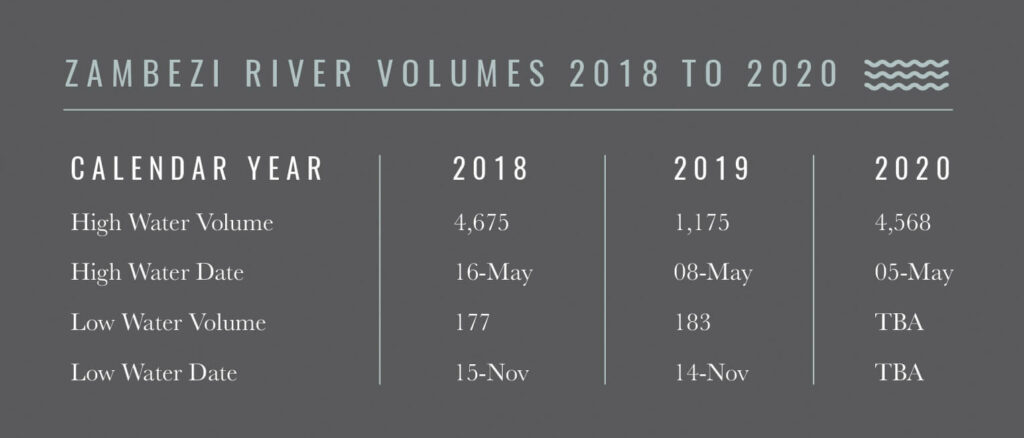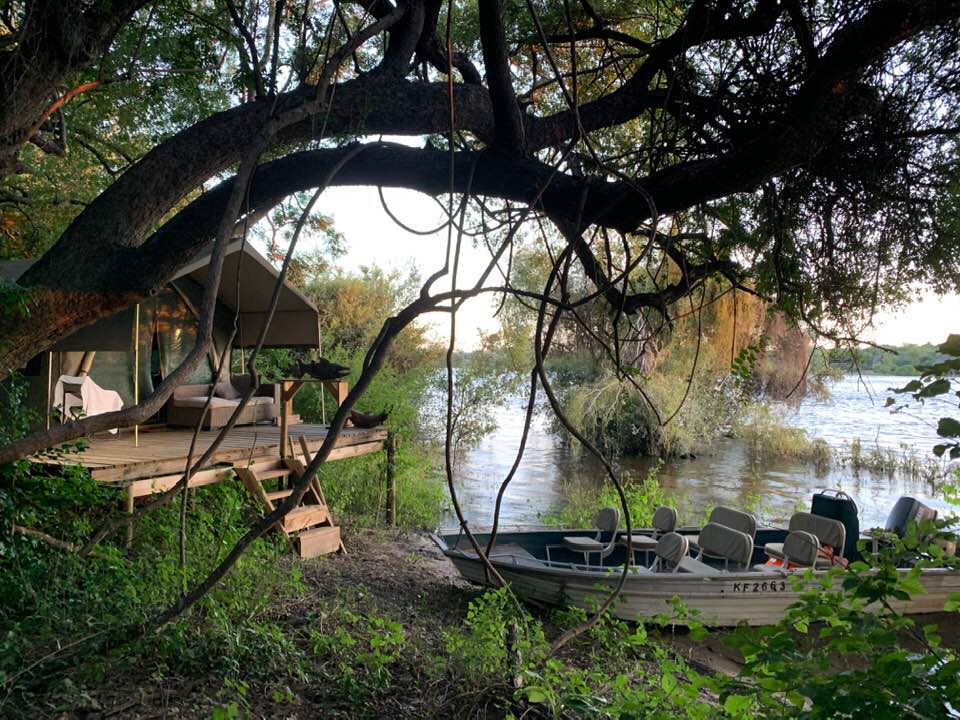According to my measurements of the height of the river’s water level on the Island, we hit a second and final seasonal peak on 4 and 5 May. The Zambezi River Authority website put the volume of the second peak this season at 4,532 m3/s on 4 May. For some perspective, that is 4 times the volume on the same date in 2019, and 97% of the high-water volume measured on 16 May 2018.
On 9 May I checked the website for confirmation, and I quote below:
“The second Zambezi River flood peak (5,825 m 3/s ) recorded at Chavuma on 6 April 2020 arrived at Victoria Falls some 27 days later on 3 May 2020, with a subdued magnitude of 4,568 m 3/s before dropping to 4,444m 3/s on 7 May 2020. The flow observed on the same date last year was 1,165m 3/s”.
On 3 May it looked certain that we would get some final rain, but we did not, and the rainy season is now definitely over. We will next expect rain in October.

They would have ended up in Zambia, and a long way downstream. Three tried to cross to the Island on 18 May, but they too were swept past.
As the level continues to drop though, they will get here, and the Island is ripe for the plucking.
By 15 May the Zambezi was dropping at a remarkably consistent 1-2” every 24 hours.
When you think that the river here is a kilometre wide, that is an astonishing amount of water. We can clearly see the sandbanks surrounding the Island through the water as the level drops, and they have been beautifully washed white by the flood.
The Kingfishers are having a feast, with lots of baby fish and crystal-clear water to see them in. Temperatures are finally where they ought to be by now; 12 degrees minimum and 27 degrees maximum.
The Zambezi River flows at Victoria Falls are decreasing, closing the period under review at 4,053 m3/s on 18 May 2020. The flow observed on the same date last year was 1,070m3/s.

There has been a lot of talk, especially on social media, about how the natural world appears to be relishing the absence of people in wild places.
Directly above the main deck on the Island, there is a clump of very tall and old trees, including a Rain Tree (Philenoptera Violacea), a Sausage Tree (Kigelia Africana), a Northern Ilala Palm (Hyphaene Petersiana), and an African Paddle Pod (Hippocratea Africana). Their canopy is by far the highest thing on the Island and must be easily 30m above the ground. A few days ago, I saw and heard four Marabou Storks up there. Ever since we opened, these huge storks have nested on Palm Island opposite us in Zambia. They are monogamous and colonial nesters, and males and females together build flat stick platforms up to 30m above the ground or water.
The bird books tell us that laying dates in Zimbabwe begin in May and go through to July. Pair formation involves elaborate and noisy displays, including bill clattering, grunts, whistles and moos.
I am cautiously optimistic that for the first time since we have been here, we may have the beginning of nesting for two pairs here on Kandahar Island. If so, would it be a coincidence that they have chosen this site this year when the activity and noise of guests and staff traffic are absent?
Let us hope they like the feel of the place and continue the process of mating, nest building, and raising young storks.

If I get the necessary permits to travel from the police, I am hoping to drive to Bulawayo for a break.
The last two months have been a unique experience for me, and I am still processing them. The Island and the river have been extraordinarily quiet; no pleasure boats, sunset cruises, helicopters, microlights, and jets bringing guests in or taking them out.
I have loved the peace, but I have so missed the privilege of showing people from all over the world the magnificence of this river and Island that I call home.
Stay safe and remember that we will be here to pamper you when the time is right for your return.



